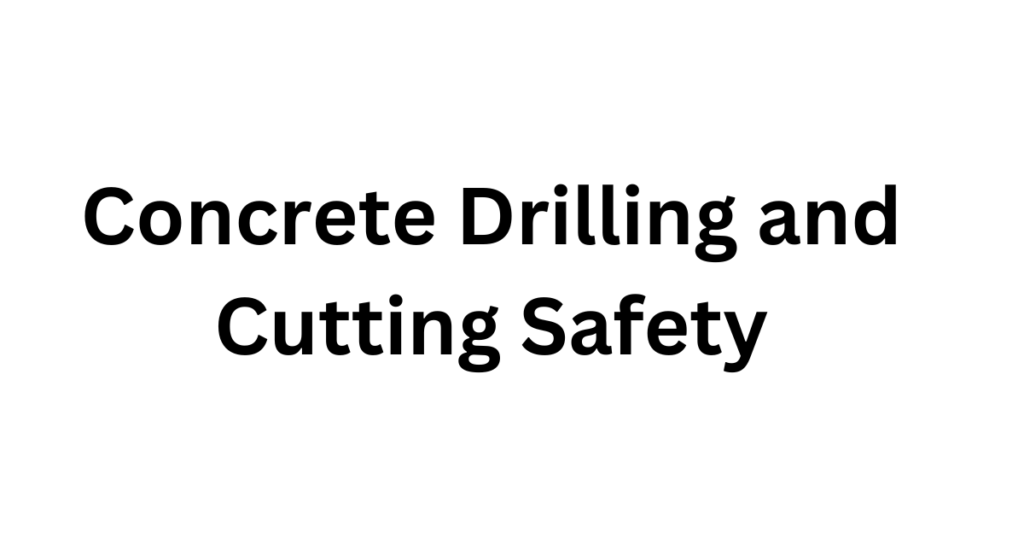Concrete drilling and cutting are common tasks in construction and renovation projects. While these activities are crucial for shaping and modifying concrete structures, they also pose significant safety risks. Proper safety measures are essential to protect the lives of workers and ensure the success of the project. In this article, we will emphasize the importance of safety when performing core cutting and concrete drilling, provide safety tips, recommend equipment, and showcase case studies of safe practices.
The Importance of Safety
Concrete drilling and cutting involve powerful tools and machinery that can cause serious injuries or even fatalities if not used correctly. Additionally, concrete dust generated during these operations can be harmful when inhaled. Therefore, prioritizing safety is paramount. Here are some reasons why safety matters:
1. Protecting Workers:
The foremost concern is the safety and well-being of the workers. Accidents on the job can lead to injuries that can be physically and emotionally devastating.
2. Preventing Property Damage:
Mistakes during concrete drilling and cutting can damage the structure itself or nearby property. Avoiding costly repairs and project delays is crucial.
3. Legal Compliance:
Adhering to safety regulations and guidelines is not only an ethical responsibility but also a legal requirement. Violations can result in fines, legal actions, and project shutdowns.
Safety Tips
1. Training:
Before operating any drilling or cutting equipment, ensure that all personnel are adequately trained. Only qualified and certified operators should handle these tools.
2. Personal Protective Equipment (PPE):
Always wear the appropriate PPE, which typically includes safety glasses, hearing protection, dust masks or respirators, hard hats, gloves, and steel-toed boots.
3. Equipment Inspection:
Regularly inspect all drilling and cutting equipment for damage or wear. Faulty machinery should be repaired or replaced immediately.
4. Dust Control:
Use dust control measures such as dust extraction systems or water suppression to minimize airborne dust. Inhaling concrete dust can lead to respiratory issues.
5. Ventilation:
Ensure that the work area is well-ventilated to prevent the buildup of toxic fumes or dust.
6. Secure the Work Area:
Cordon off the work area to keep unauthorized personnel at a safe distance. Use warning signs and barriers to alert others to the potential hazards.
Equipment Recommendations
Selecting the right equipment is crucial for safety and efficiency in concrete drilling and cutting tasks. Here are some equipment recommendations:
1. Diamond Blades and Bits:
Diamond-tipped blades and core drill bits are ideal for cutting and drilling through concrete. They provide precision and durability.
2. Dust Extraction Systems:
Invest in quality dust extraction systems to control and capture concrete dust at the source, protecting workers from hazardous exposure.
3. Wet Cutting:
Consider using wet cutting techniques when feasible, as they help to suppress dust and reduce the risk of sparks.
4. Resin Anchors and Reinforcements:
Use appropriate resin anchors and reinforcements to ensure structural integrity after cutting or drilling.
Case Studies of Safe Practices
Case Study 1: The Sydney Opera House Renovation
During the renovation of the Sydney Opera House, strict safety protocols were followed for concrete drilling and cutting. Workers received extensive training, and state-of-the-art dust extraction systems were employed. No accidents or injuries occurred during the project, which was completed on time and within budget.
Case Study 2: High-Rise Building Construction in New York City
A construction project in New York City involved drilling and cutting concrete at great heights. Workers were equipped with safety harnesses and fall protection gear. Additionally, a comprehensive dust control plan was implemented, and regular safety inspections ensured a safe working environment.
Conclusion
Concrete drilling and cutting are integral parts of many construction projects. However, they come with inherent risks that must not be underestimated. Prioritizing safety through training, the use of proper equipment, and adherence to safety protocols is essential to protect lives, prevent property damage, and ensure legal compliance. By following safety tips and learning from case studies of successful projects, we can make concrete drilling and cutting safer for everyone involved.
